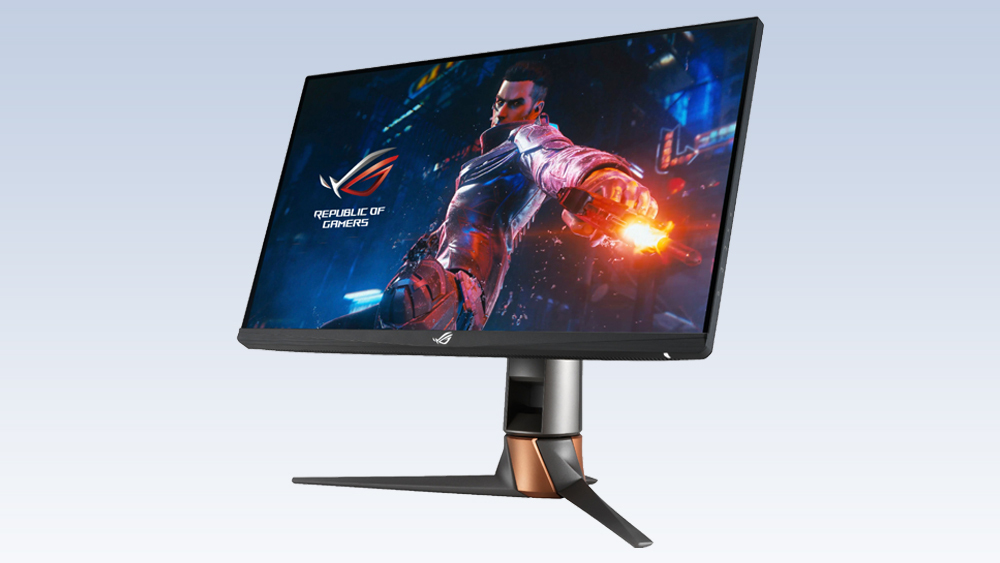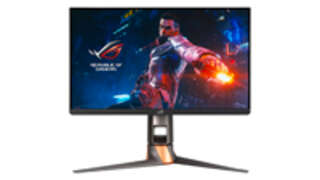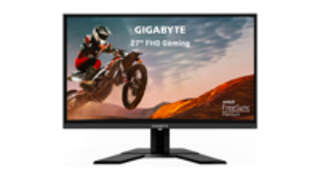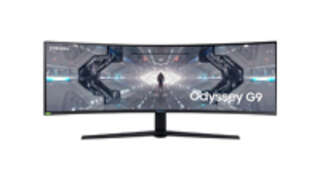The products discussed here were independently chosen by our editors.
GameSpot may get a share of the revenue if you buy anything featured on our site.
Picking out the right monitor for your gaming PC might seem simple at first, but looks can be deceiving. It used to be a simple matter of getting the right resolution and the right cable. But now you have to worry about the panel type, the cable inputs, whether it has FreeSync or G-Sync, and more.
Two of the most important monitor specs to make sense of if you’re new to PC gaming are refresh rates and response time. We’ll cover what each of those terms mean, what specs influence them, and how to get the right monitor for your rig. For an overview of all the tech that goes into a gaming monitor, check out our guide to monitor technologies.
What is refresh rate?
Refresh rate is one of the marquee features of displays, especially since the advent of gaming displays with refresh rates higher than 100 Hertz (Hz). To that end, you’ll see it at the top of just about any monitor product page.
Refresh rate refers to the number of times per second that your monitor will update with new information. Your basic desktop display–think the screen at your office or the one that came with the Dell mom bought so you could do homework–will have a refresh rate of 60Hz, meaning the image can refresh 60 times per second. This is visible even when you’re not gaming. For instance, with a 144Hz display, cursor movements will update every 7 milliseconds. With a 60Hz display, it’ll update every 17 milliseconds or so. It’s a minute, yet visible difference.
Monitor refresh rates have climbed in recent years. Some rank as high as 360Hz, and refresh rates like 144Hz and 165Hz are becoming increasingly common. If a monitor is labeled as a “gaming” display, those refresh rates are more common than sub-100Hz refresh rates nowadays.
When thinking about what refresh rate you want from your display, the easiest connection to make is to your gaming frame rate, or frames per second (fps). That refresh rate metric will tell you exactly how many frames your screen is capable of displaying.
If you’re playing an esports game like Counter-Strike: Global Offensive on a high-end graphics card, but playing on a 60Hz display, you’ll only ever see a maximum of 60fps, even though your graphics card is capable of displaying five times that number. The higher the number, the better–though you’ll see diminishing (but still noticeable) returns as you pass that 144Hz mark.
What is response time?
Response time, meanwhile, refers to how quickly a given pixel can change from black to white (sometimes back to black) or between shades of gray (Gray-to-Gray or GtG). As you might have guessed, the variety of ways manufacturers measure response time means that the number on the spec sheet may not be totally reliable.
Response times on those office and homework displays are typically around 16 milliseconds (ms) or less, but can go as low as 1ms. For response time, lower is better.

If your monitor has a high response time, you may see what the PC community refers to as “ghosting.” If you’ve ever been playing a high-action game on a monitor with poor response time, you’ve probably noticed this in the form of the image smearing, or afterimages that show what was on your screen a few milliseconds ago, while it’s already trying to show that new image.
Because there are so many different ways to measure response time, it’s a good idea to take the monitor model you’re thinking of getting and search for that model along with the keyword “ghosting.” This way, you’ll find out if any people who already own the monitor are complaining about it or if reputable review sites bring it up in their reviews.
Most gaming-focused displays will advertise a response time of 1-5ms.
Which gaming monitors are the fastest?
One way to get an idea of how good or bad response time can be is to look at the type of display panel your monitor of choice is using. There are three primary types to consider: TN, IPS, and VA. We have an in-depth guide on TN, IPS, and VA display panels, but here’s a quick look at how they matter for refresh rates and response times.
- TN, or Twisted Nematic panels, are very common and often a bit less painful to your wallet. These panels are capable of high refresh rates, but have noticeably poorer color reproduction and viewing angles, meaning that you’ll need to be looking at the screen straight-on to see it without colors looking faded or inaccurate. If you’re trying to get into competitive gaming, TN panels are the cheapest way to get a monitor with a high refresh rate.
- IPS, or In-Plane Switching panels, improve on TN panels in a few important ways. IPS panels offer much better color reproduction and viewing angles than TN, making them much better suited to production work–creating graphics, editing photography, and video–than TN panels. While IPS is better for accurate color, some users complain of “IPS glow” around edges in dark images. IPS panels have historically struggled with refresh rate and response time, but modern IPS panels have narrowed the gap significantly in both categories. IPS panels are typically more expensive, but if you can afford them, they’re the best solution for gaming and work alike.
- VA, or Vertical Alignment panels, act as sort of a compromise between TN and IPS. They offer better color reproduction than TN but fall short of IPS’s ability to display wider color gamuts, while also offering good response times and refresh rates. They offer better viewing angles than TN, but less than IPS, and usually have a higher contrast ratio, meaning you’ll get better blacks on dark images. They’re typically cheaper than similar screens with IPS panels.
Adaptive sync: Variable refresh rates, G-Sync, and FreeSync
When playing a game, it’s important for your monitor and graphics card to be synced up, with the card sending new frames to the monitor when it’s expecting it. A 60Hz monitor is expecting a new frame every 7 milliseconds. If your graphics card is sending those frames at a different rate, that can cause screen tearing–parts of two images displayed on the screen at the same time–as it tries to handle the strange timing. You can solve this by turning on vertical sync (or VSync), which forces your graphics card and monitor to work at the same pace. However, this can add latency and input lag because the monitor might be waiting to display the next image or because the game you’re playing has linked frame rate to how often it polls your mouse and keyboard (or controller) for information.
Enter adaptive sync.
Instead of forcing the graphics card to send frames when your monitor is ready for them, adaptive sync helps your monitor adapt and accept the frames when the card sends them. This reduces screen tearing, but with a much lower impact on latency, making for a smoother gameplay experience.
There are three varieties of adaptive sync worth knowing about. The HDMI 2.1 spec includes variable refresh rate technology, often called VRR, built into many new televisions. This works with Xbox consoles as well as Nvidia’s RTX 3000-series and AMD’s RX 6000-series graphics cards. The PS5 does not currently support VRR, but it could in a future update. (See our guide to the best monitors for PS5 and Xbox Series X for more.)
On the gaming monitor side, though, you’ll likely be using a DisplayPort connection, so what you’ll want to check for is G-Sync or FreeSync capability. The former is Nvidia’s proprietary standard, while the latter is AMD’s open standard. Compatibility between these two was initially sketchy, but has improved significantly since. You’ll want to check on the specs for your specific display, but chances are pretty good that if you have a new monitor and a graphics card from the last five years, it’ll work.
Best monitors for refresh rate and response time
The best gaming monitor for you will depend on your needs and gaming habits. If you’re looking to play games competitively, an ultra-fast refresh rate will serve you well. Make sure to check reviews on screens north of 165Hz, though; these high refresh rates often refer to an “overdrive” or “overclocked” rate, which pushes the monitor harder than its optimal settings. On some displays, this can lead to increased ghosting.
However, if you primarily play single-player games, you could probably get away with a 60Hz screen, though even navigating your operating system on a 144Hz screen feels faster and smoother than 60Hz. If resolution is your concern, we do have recommendations for the best 4K monitors with higher refresh rates, low response times, and more.
At the end of the day, there’s a whole list of things to consider when picking out a display, from resolution and size to input options, VRR, whether you want a dual-monitor setup, and–of course–refresh rate and response time. The effectiveness of your monitor will also depend on factors like the processing power of your graphics card and the settings you’re using for gameplay. You can have all the Hz in the world, but you’re not going to be able to play Control at 4K with ray tracing when using a GTX 1080.
If refresh rate and response time are high on your priority list, here are some great monitors that won’t slow you down.

At 24.5 inches and 1920×1080 resolution, the Asus ROG Swift PG259QN isn’t the biggest, highest-resolution screen, but this IPS monitor has it where it counts. If you’re climbing the ranks in competitive esports, a high refresh rate is going to be more important to you than anything else, and the PG259QN offers a 360Hz refresh rate with 1ms GtG response time. This screen offers G-Sync compatibility as well.

Gigabyte’s G27F shows just how affordable high-refresh gaming can be. The 27-inch, 1920×1080 IPS monitor offers a 144Hz refresh and 1ms GTG response time, and it’s one of the best cheap gaming monitors you can buy.

The Samsung Odyssey G9 gaming monitor is a 5120×1440 curved ultrawide IPS display that offers G-Sync and HDR1000 compatibility with a 240Hz maximum refresh rate and 1ms GtG response time. Oh, and this 49-inch monitor is absolutely massive.
How to test your refresh rate
It’s up to you to get your screen connected and configured, but once you have it going, there’s an easy way to make sure it’s working as expected that just about any graphics geek will point you to: the UFO test. Rather than a sketchy conspiracy theory website, it’s actually a simple visual frame rate test. The site displays a scrolling picture of a UFO running at different refresh rates. It will automatically detect the refresh rate your PC is currently sending to your monitor, so if you don’t see the right number there, you know you have to fix something. Once everything is in place, the scrolling images paint a clear picture of just how much smoother a fast refresh rate is.
Final thoughts: Refresh rate over response time
When looking at a new gaming monitor, refresh rate is going to be the number to keep your eye on the most. Most gaming monitors these days have solid response times below 7 or 8 milliseconds. Refresh rates, meanwhile, vary wildly from 60Hz up to 360Hz. If your favorite games are Assassin’s Creed and Red Dead Redemption II, a 60Hz monitor will get the job done, and a 144Hz one will be heaven. If you’re playing competitive multiplayer games, meanwhile, 144Hz is the bare minimum you should be looking at. And in both cases, adaptive sync technologies go a long way toward making games smoother on any compatible display.
Eric Frederiksen on Google+
Got a news tip or want to contact us directly? Email [email protected]

